Growing a pineapple from kitchen scraps is a fun, educational, and surprisingly rewarding gardening project. Not only does it teach patience and plant care, but it also allows gardeners of all ages to explore tropical plant growth without needing a full garden or greenhouse. With minimal materials and a little care, you can turn a leftover pineapple top into a thriving ornamental plant that can eventually produce fruit.
This guide provides step-by-step instructions, care tips, and creative ideas to successfully grow pineapple from scraps, making it an engaging project for home gardeners, classrooms, or hobbyists.
1. Understanding Pineapple Growth
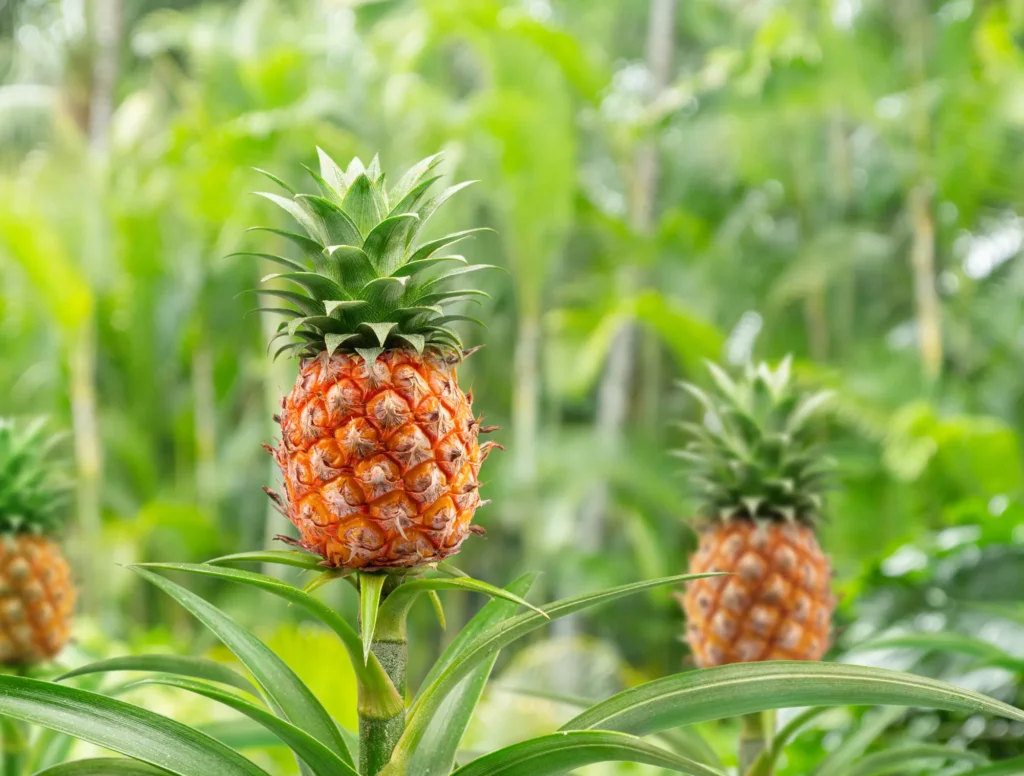
Before starting, it helps to understand how pineapples grow:
- Pineapples are tropical plants native to South America.
- They grow from the leafy crown rather than seeds.
- A single plant can take 18–24 months to produce fruit under ideal conditions.
- Even if fruit production takes time, pineapple tops grow into lush, attractive plants suitable for indoor or outdoor decoration.
Knowing the growth cycle helps set realistic expectations for this long-term gardening project.
2. Choosing a Healthy Pineapple Top
Success starts with selecting the right pineapple:
- Choose a ripe, fresh pineapple with a firm, healthy crown.
- Avoid fruit with brown, wilted, or damaged leaves, as they may fail to root.
- Look for a crown with green, vibrant leaves and minimal fruit residue at the base.
Tip: The fresher the pineapple, the better the chances of rooting and growth.
3. Preparing the Pineapple Top
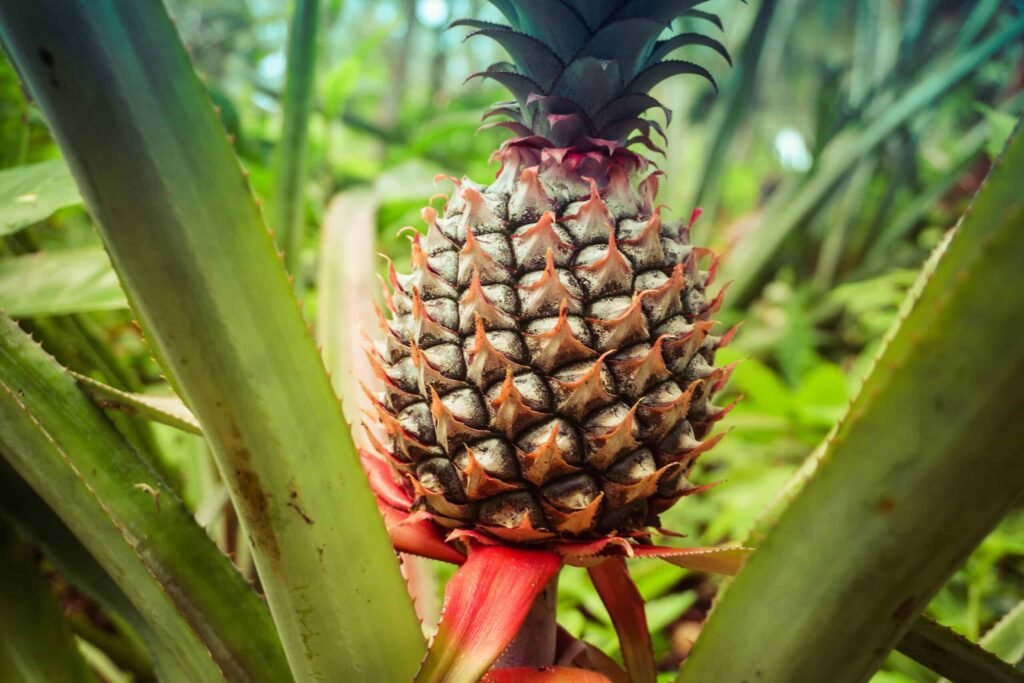
Proper preparation ensures successful rooting:
Step 1: Remove the Crown
- Cut off the leafy top about 1 inch below the leaves.
- Remove excess fruit flesh to prevent rotting.
Step 2: Trim Lower Leaves
- Pull away the bottom 1–2 layers of leaves to expose the stem.
- This exposes small root buds that will develop roots.
Step 3: Dry the Crown
- Allow the crown to dry for 1–2 days in a cool, shaded area.
- Drying prevents fungal growth and encourages root formation.
Proper preparation is key to healthy, vigorous root development.
4. Rooting the Pineapple Top
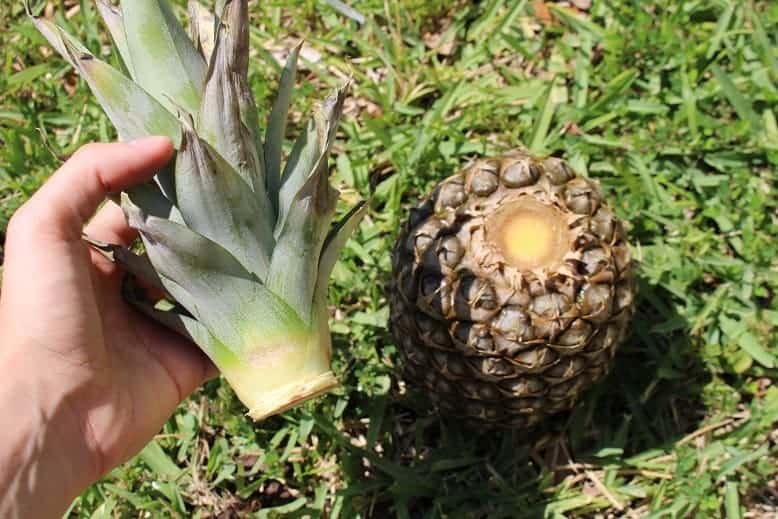
There are multiple methods to initiate root growth:
a. Water Method
- Place the dried crown in a container of water, submerging only the base.
- Use toothpicks to hold it upright if necessary.
- Change water every few days to prevent stagnation.
- Roots typically appear in 2–4 weeks.
b. Soil Method
- Plant the crown directly in a well-draining potting mix.
- Water lightly to keep the soil moist but not soggy.
- Place the pot in bright, indirect sunlight.
- Roots should start forming in 3–4 weeks.
Tip: A small plastic bag over the top can create a mini greenhouse effect, speeding up root development.
5. Selecting the Right Pot and Soil
Pineapples prefer specific growing conditions:
- Use a pot with drainage holes to prevent waterlogging.
- Choose sandy, well-draining soil with a slightly acidic pH (4.5–6.5).
- Mix standard potting soil with perlite or sand for optimal drainage.
- Avoid heavy clay soils, which can rot the roots.
Proper soil and pot selection ensures healthy root growth and long-term plant success.
6. Caring for Your Pineapple Plant
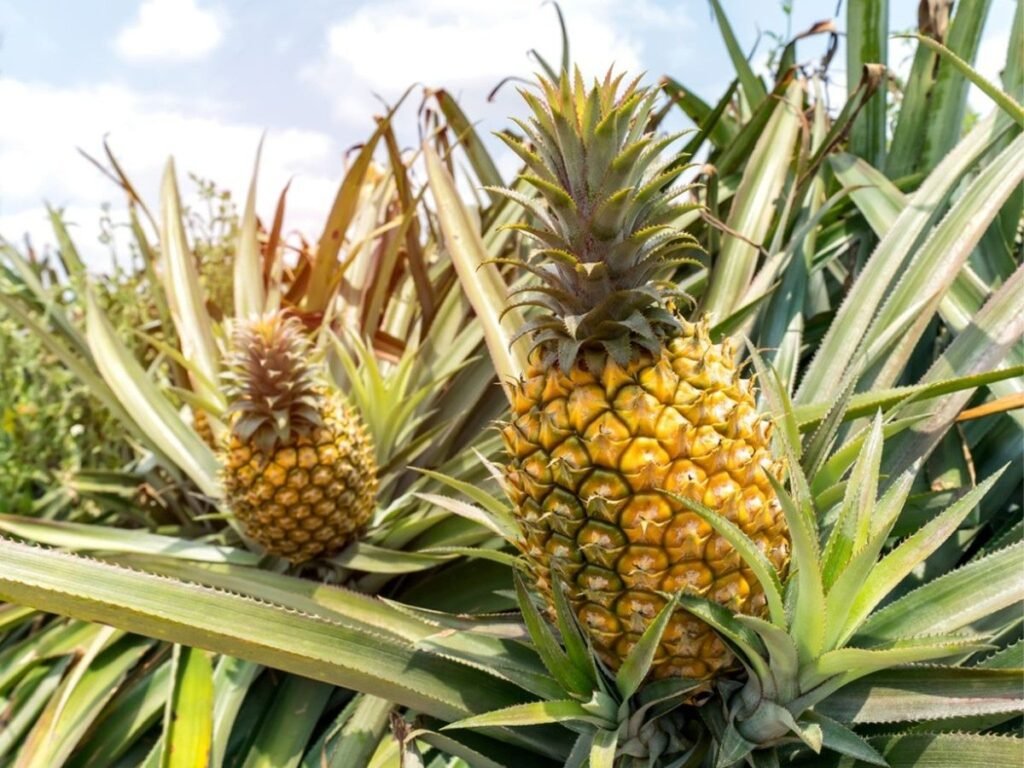
Pineapples are low-maintenance but benefit from consistent care:
a. Light
- Provide 6–8 hours of bright sunlight daily.
- Indoors, place near a sunny window or use a grow light if sunlight is limited.
b. Watering
- Keep soil lightly moist, allowing the top inch to dry between watering.
- Overwatering can lead to root rot, while under-watering may slow growth.
c. Temperature
- Ideal growth occurs in 65–85°F (18–29°C).
- Protect from frost; indoor plants may need to be moved in cooler climates.
d. Fertilization
- Use a balanced, water-soluble fertilizer every 6–8 weeks.
- Optional: Add slow-release fertilizer during warmer months to encourage leaf growth.
Consistent care ensures your pineapple develops strong leaves, roots, and eventually, flowers.
7. Potting and Transplanting
Once the roots are established:
- Transplant into a larger container to give the plant room to grow.
- Keep the crown slightly above soil level; avoid burying it too deep.
- Water and fertilize lightly after transplanting.
- Indoor plants may remain in pots indefinitely as ornamental houseplants.
Proper potting allows the plant to thrive and maintain aesthetic appeal.
8. Encouraging Flowering and Fruiting
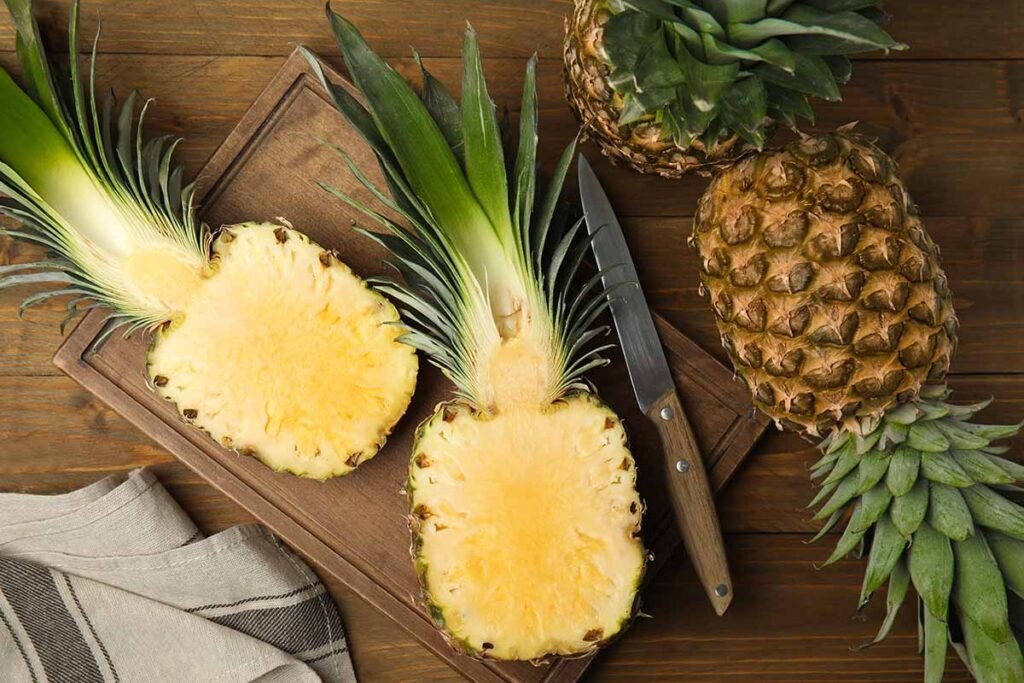
Pineapple plants can flower under ideal conditions:
- Flowering usually occurs 18–24 months after planting.
- Provide bright, direct light and moderate humidity.
- Use a high-phosphorus fertilizer to promote blooms.
- In cooler climates, indoor plants may flower if placed in sunny, warm locations.
Even if fruiting is slow, flowering produces beautiful yellow-red blooms, adding tropical charm to any space.
9. Pest and Disease Management
Pineapples are generally resilient but may face common issues:
- Mealybugs: Treat with insecticidal soap or neem oil.
- Fungal Rot: Prevent by avoiding overwatering and ensuring drainage.
- Leaf Browning: May indicate low humidity or nutrient deficiency; adjust care accordingly.
Maintaining good air circulation and proper watering reduces most problems, keeping the plant healthy.
10. Fun and Educational Benefits
Growing pineapple from scraps is more than just gardening:
- Educational Project: Teaches children about plant growth, roots, and tropical plants.
- Decorative Plant: Pineapple leaves create an attractive, spiky centerpiece indoors.
- Sustainable Gardening: Reduces food waste by giving kitchen scraps new life.
- Patience and Reward: Watching a fruit grow from scraps is a fulfilling experience.
This project combines practical horticulture with creativity and learning, making it ideal for home or classroom activities.
Tips for Maximizing Success
- Always choose healthy, fresh pineapple tops.
- Ensure adequate sunlight for strong leaf and root development.
- Be patient; fruiting is slow but the plant remains attractive even as foliage.
- Keep indoor plants free from drafts and temperature extremes.
- Rotate pots occasionally to ensure even light exposure.
Following these tips improves success rates and enhances the overall experience of growing pineapple from scraps.
Conclusion: A Rewarding Tropical Project
Growing pineapple from scraps is a fun, eco-friendly, and educational gardening project. By selecting a healthy crown, preparing it properly, providing the right soil, light, and water, and practicing patience, anyone can grow a thriving pineapple plant.
Even if fruiting takes years, the process develops horticultural skills, encourages sustainability, and creates an attractive indoor or outdoor plant. For gardeners, hobbyists, and families, this project demonstrates how kitchen scraps can transform into lush tropical greenery, blending practicality with delight.
From leaf growth to eventual flowering and fruiting, the journey of growing a pineapple from scraps is a satisfying and rewarding exploration of plant life, perfect for small-space gardens, classrooms, or anyone seeking a unique and educational horticultural experience.
